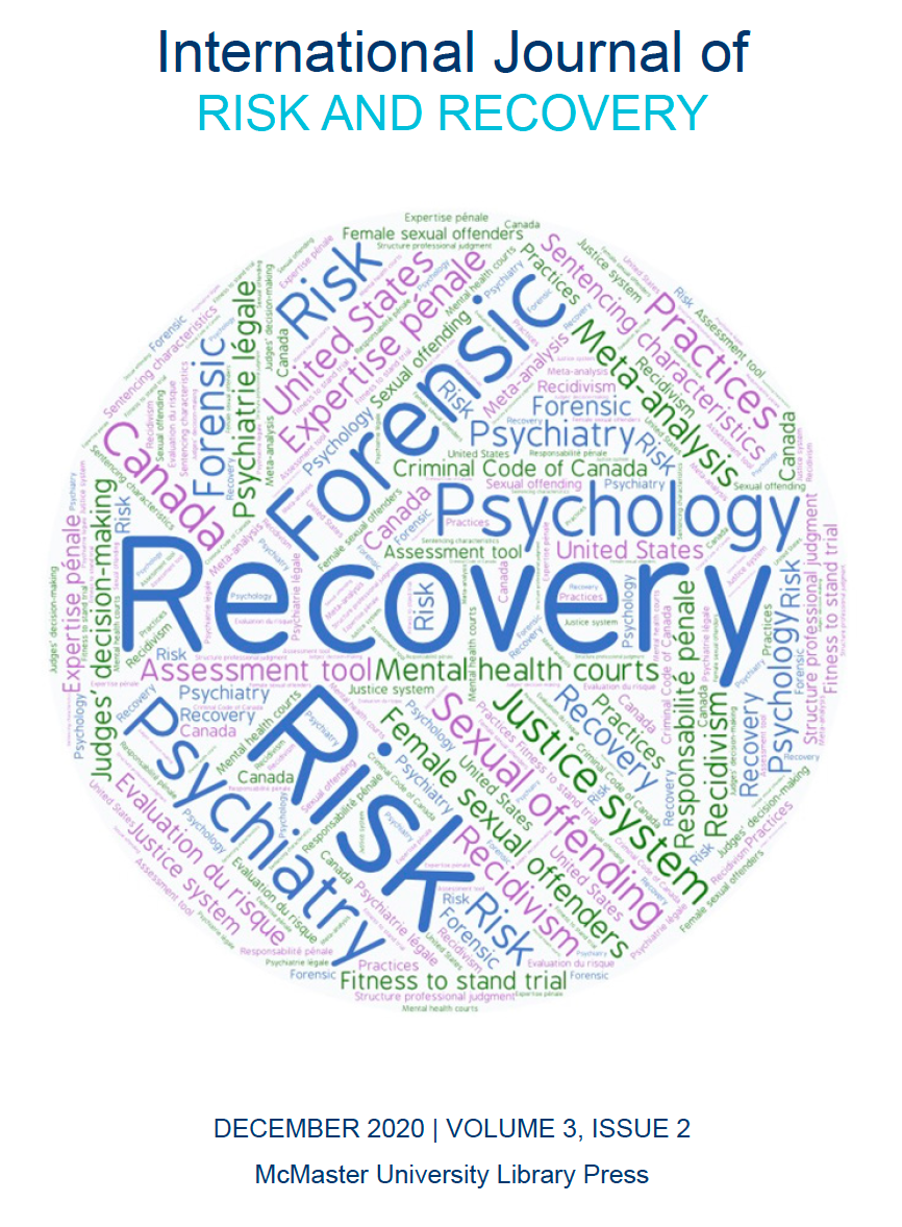Shifts in the significant risk threshold
DOI:
https://doi.org/10.15173/ijrr.v3i2.4582Keywords:
Canadian Criminal Code, Forensic system, Mental Health, Significant threat, Significant risk, Winko, Review BoardAbstract
This Editorial addresses the concept of significant threat pertaining to Canadian law
References
Canadian Criminal Code, L.R.C. (1985) ch. C-46 (last amended on December 12, 2017). (accessed on December 31, 2020)
R. v. Winko 1999. (accessed on December 31, 2020)
R. v. Ferguson, 2010 ONCA 810 . (accessed on December 31, 2020)
Wall (Re), 2017 ONCA 713. (accessed on December 31, 2020)
Collins (Re) 2018 ONCA 563. (accessed on December 31, 2020)
Swanson JW, Holzer CE, Ganju VK, Jono RT. Violence and psychiatric disorder in the community: evidence from the Epidemiologic Catchment Area surveys. Hosp Community Psychiatry. 1990;41(7):761–70
Downloads
Published
2020-12-31 — Updated on 2021-01-14
Versions
- 2021-01-14 (2)
- 2020-12-31 (1)
How to Cite
Bradford, J., & Chaimowitz, G. (2021). Shifts in the significant risk threshold. International Journal of Risk and Recovery, 3(2), 1–5. https://doi.org/10.15173/ijrr.v3i2.4582 (Original work published December 31, 2020)
Issue
Section
Editorial
License
Copyright Notice
Authors who publish with this journal agree to the following terms:
- Authors retain copyright of their work and grant the International Journal of Risk and Recovery the right of first publication with the work simultaneously licensed under a Creative Commons Attribution License. This allows others to share the work with an acknowledgement of the work’s authorship and initial publication in this journal.
- Authors are able to enter into separate, additional contractual arrangements for the non-exclusive distribution of the journal’s published version of the work (e.g., post it to an institutional repository or publish it in a book) with an acknowledgement of its initial publication in this journal.
- Authors are permitted and encouraged to post their work online (e.g., in institutional repositories or on their websites) before and during the submission process as it can lead to productive exchanges, as well as earlier and greater citation of published work. (See The Effect of Open Access.)

